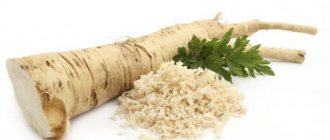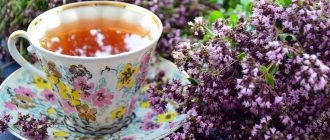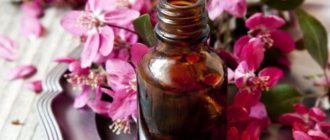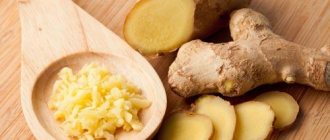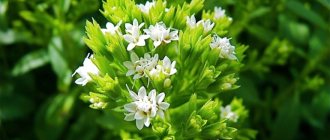Good afternoon, many will be interested in understanding their health and their loved ones, and I will tell you my experience, and we will talk about Geranium: the medicinal and beneficial properties of a fragrant indoor plant. Most likely, some details may differ, as was the case with you. Please note that you should always consult with highly specialized specialists and not self-medicate. Naturally, you can quickly find the answer to the simplest questions and diagnose yourself. Write your questions/suggestions in the comments, and together we will improve and supplement the quality of the material provided.
The healing properties of homemade geranium for humans
Indoor geranium helps normalize blood pressure. As practice shows, it is enough to attach a small leaf of such a plant to your wrist. This fragrant plant also very effectively stimulates blood flow and helps normalize heart rate. Pelargonium is very widely used for the treatment of acute respiratory viral diseases. For this purpose, tincture or freshly squeezed juice is used.
Pelargonium helps very well with otitis media, for which you just need to roll up a leaf of the plant and place it inside the inflamed ear.
An indoor flower can also help in the prevention and treatment of the following diseases:
- osteochondrosis;
- radiculitis;
- insomnia;
- migraine;
- chronic fatigue;
- toothache;
- stomach upset;
- purulent wounds.
The plant used for medicinal purposes must be completely healthy and well developed, without signs of damage by diseases or insect pests.
Home first aid kit: recipes
Indoor geranium has found its use in the treatment of various ailments.
Make a decoction: 1 tbsp. l. crushed leaves and flowers, pour 0.5 liters of boiling water. Leave for 12 hours. Take 1 tbsp. l. every 3 hours.
For constipation
2 tsp. dry raw materials, pour boiled cooled water (0.5 l). Leave for at least 8 hours. Drink in small portions throughout the day.
For toothache
Rinse a fresh geranium leaf and place it behind the cheek on the side of the painful tooth for 20 minutes. Repeat the manipulation as pain appears.
Place the leaves of the plant in cheesecloth, beat lightly with a hammer, and squeeze out the juice. Place 2 drops of juice into each nostril up to 3 times a day.
Bandage a fresh leaf of the plant to the pulse on both wrists.
For neuralgia
Apply the sheet to the sore spot, put linen cloth on top, and bandage it with a warm scarf. Change leaves 3-4 times during the day.
For otitis media
Fold a geranium leaf into a tube and insert it into the sore ear.
For eczema
Dip freshly picked pelargonium leaves into water and boil for 5 minutes over low heat. Make lotions from the warm broth.
It is enough to inhale the aroma of flowers. To do this, you can touch the leaves or rub one leaf in your palm.
Place a pot with a plant in the vacationer’s bedroom.
For abdominal pain
Finely chop the geranium leaves, pour boiling water, leave for 5 minutes in a steam bath. Take the decoction up to 4 times a day.
Take 20 drops of freshly squeezed plant juice. Frequency of application – every 2 hours until symptoms completely stop.
For problems with the gastrointestinal tract
Pour crushed dry leaves and roots of the plant (2 tsp) into 0.5 liters of cold water. Leave for 8 hours. Strain, drink 150 ml up to 4 times a day.
For hemorrhoids
Mash a clean geranium leaf (you can use a mortar) and apply it to the hemorrhoidal bump (for external hemorrhoids).
Pass fresh leaves and stems of the plant through a meat grinder. Squeeze out the mass. Use the resulting juice for nasal, uterine and other bleeding, making lotions from the juice.
Apply geranium oil to your fingertips and rub the product into your scalp. Wrap your head in a plastic bag and wrap it in a towel. Leave for half an hour, then rinse with warm water and wash your hair with shampoo.
Cut off a dozen leaves of the plant, rinse, and knead in your hands until the juice releases. Apply the leaves to the painful area, cover with plastic, and secure with a warm scarf. Apply the compress before going to bed.
For acne
Grind 3 leaves to a paste. Add sour cream (1 tbsp), stir. Apply the mask to your face and rub in with your fingers. After 15 minutes, rinse with warm water. Frequency of application – 1 time per day.
Anti-aging
Pass the leaves of the plant through a meat grinder. Squeeze out the juice using cheesecloth. Add water in a 1:1 ratio. Pour geranium water into molds and freeze. Rub your face with ice cubes every day.
With regular use of such cubes, the number of wrinkles will significantly decrease, skin elasticity will increase, and a rejuvenating effect will be visible.
For hair loss
Pour boiling water (0.5 l) over dry raw materials (3 tbsp). Cool, strain. Rinse your hair with infusion. No need to rinse off.
Use of the plant in cooking
Pelargonium is the most famous and popular addition to baked goods and jellies. This plant also adds aroma and piquancy to many other culinary products:
- the leaves of varieties with a distinct lemon, mint, or rose flavor are often added to iced tea, butter, and ice cream;
- fragrant geranium with the aroma of rose and lemon can be added in layers to flour or granulated sugar, which allows you to impart a subtle and very delicate aroma;
- candied leaves using egg white and sugar can be used to decorate pies and all kinds of desserts.
Other culinary possibilities for using the leaves of the decorative aromatic perennial are the inclusion of plant raw materials in fruit punches, herbal vinegars, all kinds of salads, biscuit dough and buns, holiday bread, cream cheese products and rice dishes. Geranium syrups are used in jellies, sorbets, mousses and ice cream. Chopped fresh pelargonium also makes a great addition to fresh or frozen fruit.
Pelargonium, which many gardeners call geranium, is a well-known indoor plant. The beneficial properties of geranium for humans and its medicinal purposes are known to few. However, when choosing such a plant as a component for treating ailments, you need to take into account not only its medicinal properties, but also contraindications.
Chemical composition of pelargonium
Fragrant geranium has not only a memorable smell, but also an almost unique chemical composition. Harvesting of useful raw materials is carried out during the flowering period. For cutting, the flower and also the stem are used. The benefits of the rhizome are insignificant, therefore this part of the plant is used quite rarely as a medicinal raw material. The beneficial and medicinal properties of geranium are due to:
- vitamin "C";
- essential oil;
- tannins;
- carotene;
- starch;
- pectin;
- tannins;
- gum.
The main value of such a perennial is the abundant amount of bactericidal substances released by the plant during its life. When combined with air, such components have a suppressive effect on pathogenic microflora.
Pelargonium helps very well with otitis media, for which you just need to roll up a leaf of the plant and place it inside the inflamed ear.
What does geranium look like?
The Latin name for geranium is pelargonium. Many people know this plant by this name. In general, the name of the flower comes from the Greek word “pelargos”, which means “stork”. Geranium fruits really look like a stork's beak.
Despite the fact that geranium is called pelargonium, they are still different flowers, although they belong to the same family. What is the difference between geranium and pelargonium?
Pelargonium flowers differ in shape. They form large umbrella-inflorescences. There are many varieties of this plant: there are white, pink and dark red flowers. There are also two-color varieties.
Geranium flowers consist of 5-7 symmetrical petals. They are often solitary or form semi-umbrella inflorescences. There are flowers with purple and blue inflorescences. White, crimson, and pink plant varieties are popular among gardeners.
Depending on the variety, the appearance of geranium may vary. Zonal geranium has dark green leaves with brown edges, ivy-leaf flowers resemble the shape of ivy, and Angel geranium resembles a pansy.
Geranium: medicinal properties and contraindications
The flower contains a huge amount of phenolic compounds, such as:
- coumarins - have bactericidal, anti-inflammatory and immunomodulatory properties;
- phenolic acids - promote the production of interferon;
- tannins - bind bacterial toxins, reduce inflammation;
- flavonoids - have anti-inflammatory, antiviral, antihistamine, antioxidant properties.
Geranium essential oil also contains:
- esters of acetic, formic, butanoic and valeric acids;
- geraniol;
- citronellol;
- terpineol and terpene alcohols;
- ketones;
- phenol.
- pregnancy and lactation;
- individual intolerance;
- elderly and children;
- chronic gastrointestinal diseases;
- hyperviscosity syndrome.
Most often, fragrant geranium is used for medicinal purposes. Its contraindications are identical to those of other species. Decoctions of roots and leaves, tinctures, hydrolates and essential oils have medicinal properties. They have the following effects on the body:
- hemostatic;
- diuretic;
- anti-inflammatory;
- healing;
- deodorizing;
- tonic;
- antiseptic;
- fungicidal;
- stimulating the functioning of the kidneys and adrenal glands.
In folk medicine, with the help of fragrant pelargonium, nervous disorders, migraines, hypertension, PMS, hemorrhoids, neurological pain, otitis media, laryngitis, sore throat, skin diseases, toothache, radiculitis, menstrual bleeding, diarrhea, menopausal ailments, kidney stones and gall bladder are treated. . Used for prevention purposes against colds.
No less popular among herbalists is meadow geranium, which, in addition to the medicinal properties and contraindications inherent to the whole species, also has a powerful astringent effect - due to the content of a large amount of tannins. Decoctions and tinctures are used for treatment. In different dosages, meadow geranium has the property of both depressing and stimulating the nervous system. It is used to treat epilepsy, fever, and insomnia. Thanks to the antitoxic effect, tinctures from the plant “know how” to fight against the poisons of insects and snakes.
Fragrant geranium indications and contraindications
Water and oil infusions of fragrant geranium are recommended:
- as wound healing agents;
- for resolving hematomas and relieving swelling;
- for otitis and other inflammatory diseases of the ears;
- for ear and toothache;
- with exacerbations of hemorrhoids;
- with herpes;
- as an adjuvant for persistent hypertension.
Contraindications to treatment with fragrant geranium:
- low pressure;
- acute stage of cystitis or urolithiasis;
- cardiac ischemia;
- pregnancy and lactation;
- tendency to allergic reactions to herbal medicines.
Useful properties of geranium: history and modernity
The fact that this flower has bactericidal properties was already suspected by the inhabitants of Europe in the 17th century. It was called “the flower of the urban poor” because it was noted to have the ability to purify the air from toxic compounds, burning and dampness. Subsequently, scientists conducted experiments, as a result of which it was revealed that the substances secreted by the flower kill microbes and repel insects. It is for this reason that geranium is a frequent guest on the windowsills of clinics, preschools and school institutions.
We recommend reading: After childbirth, the cervix did not close
The flower itself and the essential oil extracted from it are widely used in alternative medicine and cosmetology. Geranium has also been used in pharmacology, and is most often used to treat ENT diseases.
Geranium is a familiar plant and known to almost everyone. They love it for its decorative appearance and absolute ease of care. The flower can often be found in homes and various institutions. But many do not know that geranium has medicinal properties. What are the indications and contraindications for its use?
Healing properties for the body
All types of plants have medicinal properties, but fragrant geranium is most often used in medicine. It is its openwork, cut leaves that are used for preparing infusions and decoctions.
Medicinal properties of geranium:
- bactericidal;
- anti-inflammatory;
- decongestant;
- astringent;
- pain reliever;
- soothing and relaxing.
Geranium is used to treat neurological disorders and headaches associated with spasms.
The essential oil of the plant effectively destroys staphylococcus bacteria and other harmful microorganisms in the air of the room. The scent of geranium has a strong calming effect. Therefore, people who suffer from neuroses or are in a stressful situation are recommended to place a flower in their bedroom to inhale a healing aroma while sleeping.
Properties and composition of pelargonium
In nature, the domestic species of geranium is called pelargonium. It is considered a perennial plant with spherical inflorescences. Geranium flowers are large and most often have a rich red color. In general, a flowering plant has many color shades in nature. Does not require special attention in self-care. The only thing that the plant cannot tolerate is direct sunlight on the plant, which results in leaf burn.
In nature, there are 2 types of geranium that bring the greatest benefit to humans:
- zonal;
- fragrant.
It is important to know! Before choosing to plant a geranium, you need to consider its color. The color red serves as a powerful source of energy. Pink geranium is considered a talisman for preserving marital relationships.
Each element of geranium contains beneficial substances. The leaves contain a large number of essential oils, vitamins, and acids that have healing properties. The rhizomes contain the largest amount of starch, carbohydrates, tannins, carotenes, and acids. The specific smell emanating from the flower repels harmful insects.
You can buy essential oil at a pharmacy, or you can prepare it yourself at home. Geranium oil is widely used in cosmetology and massage parlors. If you add a few drops of this oil to the water when washing your face, your skin will be deeply cleansed. If you add oil during a massage, it will help get rid of cellulite. It is simply impossible to list all the beneficial properties of geranium. It has the following actions:
- antiseptic;
- diuretic;
- pain reliever;
- bactericidal;
- decongestant.
Modern medicine does not recognize the unique properties of geranium, but folk medicine, on the contrary, uses leaves, flowers and roots for medicinal purposes. A fragrant indoor flower activates blood circulation and normalizes the functioning of the heart muscle.
- If you apply a pelargonium leaf to the base of your hand, your blood pressure will normalize.
- Pelargonium stimulates the liver and kidneys.
- Fragrant geranium is considered the best remedy for coughs, runny nose, sore throat and a number of different viral diseases.
- The indoor flower is used for ear pain. To do this, you need to roll the leaf into a tube and place it in your ear.
- In the same way, a leaf is applied to a diseased tooth to relieve pain.
It is important to know! The leaves, flowers and roots contain a huge number of substances, due to which pelargonium is widely in demand in the manufacture of medicines.
It is prohibited to use the drug made from the plant for people with serious diseases of the stomach, intestinal tract and chronic constipation. You should not drink freshly squeezed juice from the plant - it is very poisonous and can cause poisoning.
Benefits and medicinal properties
The plant has the following beneficial effects on the body:
- bactericidal;
- antitumor;
- insecticidal;
- antiseptic;
- restorative;
- antidiabetic;
- immunomodulatory.
- All kinds of products based on fragrant pelargonium are used to treat:
- pathologies of ENT organs;
- neuralgic disorders (as a sedative);
- manifestations of PMS and other gynecological problems;
- pediculosis;
- damage to the organs of the circulatory system, including internal bleeding;
- cuts and other damage to the skin (as a restorative and antitumor drug);
- ARVI (as a natural repellent).
Houseplant - pelargonium
Fragrant pelargonium blooms at home.
Indoor geraniums are most often propagated by cuttings; some varieties are propagated by seeds. Small cuttings with shoots are cut from the mother plant, then placed in a container with settled water. As soon as the cuttings take root, they are planted in small pots in a standard well-drained soil mixture.
This is a heat-loving and light-loving plant. Room temperature is optimal for its growth and flowering. In winter, the temperature is reduced to 15 degrees.
With a lack of lighting, the leaves become smaller and fall off, and the beginning of flowering is delayed. Flower pots are placed on window sills on the south side of the room.
Geranium needs regular and abundant watering, but does not tolerate spraying the above-ground parts with water. Within a month, it is necessary to feed pelargonium twice with universal fertilizer for flowering plants.
Often the plant sheds old yellowed leaves - this is a normal process, you should not be alarmed. Pelargonium is susceptible to most diseases that affect indoor plants - Alternaria, gray and rhizoctonia rot, rust, spotting, late blight and others. At the first signs of disease, pelargonium must be treated, otherwise the plant will die.
For more information about growing pelargonium, watch the following video:
Botanical description of the plant
Fragrant geranium belongs to perennial herbaceous plants from the Geranium family. The tropical and subtropical regions of South Africa are considered to be the birthplace of the flower; in this area, the plant still lives in wild form. Today, this representative of the Geraniaceae is considered one of the most popular indoor plants; it not only has high decorative qualities, but is also actively used in folk medicine.
One of the main distinguishing features of this flower is the abundance of all kinds of varieties, which have various aromatic qualities. Breeders have bred hybrids with numerous small hairs, upon contact with which the bush can emit the smell of mint, lemon and even apple. These aromatic substances have a bactericidal effect, which further popularizes geranium.
The botanical characteristics of the plant are presented in the table below:
| Root system | Fibrous, with several main roots. Individual parts of the root system can form thickenings in which water and nutrients are stored |
| Stem | Straight, branched, up to 1 m high |
| Leaf Shape | Rounded, but the edges are strongly dissected, divided into 3–5 lobes |
| Leaf color | All kinds of shades of green, some varieties are characterized by various inclusions of bright colors (white, red, etc.) |
| Flower shape | The flowers are round, with almost perfectly round petals |
| Flower color | Depending on the variety, the flowers acquire shades of white, red, blue and pink. |
| Fruit shape | Strongly elongated, with a characteristic point at the end, the shape of the fruit resembles the beak of a crane |
| Fruit color | Shades of brown or green-brown tones |
Fragrant geranium blooms profusely; under optimal conditions, flowering can be observed from early spring until almost the beginning of winter. At this time, large flowers with a diameter of up to 5 cm are formed on the bush. Each peduncle contains from one to three flowers, collected in small racemose inflorescences. Each flower grows up to 10 stamens with anthers. After flowering, a fruit-box with numerous seeds ripens on the bush.
Geranium essential oil
Geranium essential oil is extracted from the plant, which is used in the perfume industry, cosmetology and medicine. The oil is obtained by steam distillation. It has a pleasant floral aroma, reminiscent of rose oil. The consistency of the oil is light and slightly viscous, with a transparent yellowish tint.
Geranium essential oil contains many volatile aromatic substances, including geraniol, menthol, citronellol, linalool and others. It is also used in aromatherapy as a sedative.
In folk medicine it is used for diseases of the ears and upper respiratory tract. As an antiseptic and healing agent, the oil is used for frostbite, burns, eczema, diaper rash and bedsores.
Geranium oil also helps normalize hormonal levels in women, relieves pain during the menstrual cycle, and relieves depression, stress and anxiety.
Geranium essential oil can be purchased in online stores specializing in the sale of natural cosmetics, eco-products and products for home aromatherapy. The average cost is 200 rubles per 10 ml. After opening the package, the oil must be used within 3 weeks.
Main varieties
Today there are a huge number of different varieties of plants, but not all of them are considered popular among gardeners.
We recommend reading: A nursing dog has very swollen tits, one puppy can’t cope
Most often on the windowsill you can find the following varieties of aromatic pelargonium:
- Lemon - distinguished by rough leaves with slight pubescence, flowers are small, lilac-pink. Under optimal conditions, the plant can grow up to 1–2 m in height, so it is often used as a standard species. The plant has a distinct lemon aroma, which is released after touching the leafy hairs.
- Felt is a low-growing, compact bush, highly branched. The leaves are covered with numerous small hairs, which creates the effect of felt fabric. The flowers on the bush are small, pale white, with purple splashes. A distinctive feature of the plant is the delicate minty smell that is released by the green mass.
- Grape -leaved is an erect bush, about 90 cm high. The variety is named due to the special shape of its leaves, reminiscent of grape foliage. During flowering, white-pink or pink-purple flowers with bright stripes are formed on the bush. The plant has a delicate scent, including notes of lemon and rose.
- Apple cider is a small flower and is characterized by small, rounded leaves with wavy edges and small white flowers. The green mass has a delicate apple aroma, while the leaves emit a lemon-pink aroma. The flower develops well both indoors and in the flowerbed.
- Lady Plymouth is a small compact bush that is ideal for growing in pots and containers. The leaf blade is heavily dissected and has a white border along the edge. The flowers are medium size, soft pink. They have a delicate but distinct rose scent.
- Gray Lady - the flower is characterized by large dissected gray flowers with a thin white border. The flowering of the bush is inconspicuous; small white flowers develop on the shoots, gathering in small inflorescences.
- Curly is an erect or climbing shrub, up to 70 cm high. The stem is most often herbaceous, but becomes woody over time. The leaf blade is cut, strongly twisted. Flowers develop white, lilac or pink. This geranium has a strong lemon aroma, so it is often used in cooking.
- Paniculata is a small ornamental shrub distinguished by small white flowers and small curly leaves. The foliage has a rather exotic smell, combining the aromas of mint, rose and nutmeg.
Geranium, or fragrant pelargonium, is one of the most popular houseplants. This indoor flower pleases its owner not only with its elegant decorative appearance, but also with a whole range of various health benefits. However, it is not easy to grow it on a windowsill; it is believed that this plant is a rather whimsical species. From this article you will learn in detail what fragrant geranium is, and also become familiar with its main requirements for growth and long-term flowering.
- Botanical description of the plant
- Properties for the human body Benefits and medicinal properties
- Contraindications and harm
- Lighting
- Watering and spraying
- Cuttings
- All kinds of products based on fragrant pelargonium are used to treat:
- pathologies of ENT organs;
- neuralgic disorders (as a sedative);
- manifestations of PMS and other gynecological problems;
- pediculosis;
- damage to the organs of the circulatory system, including internal bleeding;
- cuts and other damage to the skin (as a restorative and antitumor drug);
- ARVI (as a natural repellent).
Pelargonium, called geranium in everyday life, often grew on the windowsills of our grandmothers and was even considered a symbol of philistinism. Nowadays, the unpretentious indoor flower has been replaced by luxurious exotic plants. But the modest pelargonium is a real home doctor, and if you learn about the beneficial properties of fragrant geranium leaves and what they help with, you will definitely have a useful “philistine” flower.
What are the benefits of geranium oil?
Golden geranium oil, reminiscent of sunflower oil, exudes a viscous, fragrant odor. The ancient Greeks, Egyptians and Romans used it for inflammatory processes in the spine and premenstrual migraines.
Pelargonium ether, having an antiseptic effect, heals eczema, dermatitis, burns, herpes, and relieves inflammation. It is a proven remedy for the treatment of diseases of the ear, throat, oral mucosa, varicose veins and hemorrhoids; effective for heart diseases.
Aromatherapists advise using pelargonium essential oil to improve the quality of sleep, for irritability, fatigue, and depression. Geranium aroma is useful for headaches, migraines, inflammation of the gallbladder, diseases of the liver, gastrointestinal tract, hypertension, neurasthenia.
Use in folk medicine
The medicinal properties of fragrant geranium are contained in the leaves, flowers, roots, and stems. But most often the leaves of this flower are used in folk medicine. Decoctions, infusions, alcohol tinctures, and oil extracts are prepared from them. Essential oil can be purchased at a pharmacy. It is often included in ointments, creams and lotions.
Fresh leaves and juice
The leaves are used externally in the following ways:
- rub sore spots;
- crushed and applied in the form of compresses;
- first knead in the hand, carefully place in the ear, rolling it into a tube, for ear pain.
Preparing medicine for otitis media
- Take 5 geranium leaves.
- Grind into a paste.
- Add 1 tbsp. l. camphor alcohol.
- Add 50 g of rye or oat flour.
- Knead.
This mass is applied to the outer surface around the ear and insulated with a bandage. It is important to know that warm compresses for ear pain are not always useful and, on the contrary, can cause even more harm. Therefore, acute ear pain in an adult or child is a signal to immediately contact an otolaryngologist.
Fresh ground leaves are also used to make juice. It is used only externally; lotions and compresses are prepared from it. Often used to treat ears. There are also recipes that recommend instilling geranium juice for cataracts. Such procedures can harm the mucous membranes of the eyes. Such treatment methods cannot be used without consulting an ophthalmologist.
Decoction
It can be prepared from dry and fresh leaves, as well as from the roots of the flower.
Preparation of a decoction of leaves
- Take 1 tbsp. l. dry raw materials.
- Pour a glass of boiling water.
- Boil for 1 minute.
- Leave for 30 minutes.
- Strain.
You can drink 1 tbsp. spoon 3 times a day with meals. Geranium decoctions are recommended to be drunk for kidney stones as a diuretic, as well as for neuroses, insomnia, and digestive disorders (it has astringent properties). Externally used in otolaryngology.
Root decoction recipe
- Take 1 tbsp. l. chopped root.
- Pour a glass of boiling water.
- Boil for 1 minute.
- Leave for 1-2 hours.
- Strain.
Take ¼ cup 4 times a day before meals. Recommended to drink for hypertension. It can also be used externally in dermatology, cosmetology, and otolaryngology.
The popular drug "Umkalor" with a wide spectrum of action - antimicrobial, antiviral, immunomodulatory, mucolytic - is made from the root extract of the South African pelargonium sidoides. It is prescribed for tonsillitis, bronchitis, tracheitis, pharyngitis, and otitis of an infectious nature. There are many positive reviews about the effective treatment of sinusitis with this herbal preparation. Allowed for children after one year.
Infusion
The beneficial properties of pelargonium are better preserved in cold infusions. You can infuse not only the leaves, but also the ground root.
Preparation of infusion in a cold way
- Grind 10 geranium leaves.
- Pour a glass of cold boiled water.
- Add 1 tsp. honey
- Leave for 8 hours.
This infusion is popularly called honey water. It is used externally for inflammation of the eyes, for healing wounds on the skin, rinsing the mouth and throat.
Tincture
Pelargonium fragrant (leaves and root) is used to prepare an alcohol tincture.
Preparation
- Take 3 tbsp. spoons of chopped fresh leaves.
- Pour in ½ glass of vodka (40% alcohol).
- Leave for 7 days at room temperature.
- Strain.
Medicinal geranium tincture can be taken for all of the listed diseases. Dosage: ½ teaspoon 2 times a day, diluted in a tablespoon of water. Useful to take at night for insomnia. It can be used externally in diluted form as an antiseptic for the skin, treating wounds, throat, and oral mucosa.
Essential oil
Essential oil from fragrant geranium can be freely purchased at the pharmacy. The price of the drug may vary significantly. It depends on the manufacturer, volume, type of plant. For example, Egyptian geranium oil is highly valued in cosmetology and costs much more. Essential oil is obtained from the aerial parts of young plants.
Properties of geranium essential oil:
- normalizes blood circulation;
- relaxes the nervous system;
- relieves swelling;
- heals wounds;
- relieves skin irritation;
- stimulates the immune system;
- relieves inflammation of the ENT organs and respiratory tract;
- stimulates hair growth;
- prevents the appearance of dandruff;
- normalizes fat metabolism and the functioning of the sebaceous glands;
- improves lymph flow;
- has an antiviral effect;
- helps with herpes;
- eliminates cellulite.
How is it used?
- Massage. Add 3-5 drops to the cream or massage base oil.
- Therapeutic baths. You can add 7-8 drops; a mixture of essential oil, sea salt and honey gives a good healing effect.
- Compresses and applications. Can be warm or cold.
- Cold inhalations. Place 2-3 drops into aromatic pendants or onto a napkin and inhale the vapors of the essential oil. If you have insomnia, you can place a soaked napkin on your pillow.
- Warm inhalations. Add 3-5 drops to warm (not hot!) water and breathe over the water through your nose or mouth. Also added to inhalers.
Cosmetology
Geranium in cosmetology is most often used in the form of essential oil. It is used in its pure form. They are also added to various masks and enriched with them in cosmetics - hair shampoos and face creams.
Geranium essential oil for hair. Can be rubbed into the scalp to accelerate hair growth. Helps with dandruff and lice. To prevent dry skin and brittle hair, it is recommended to drip oil onto a comb and comb the strands thoroughly. Geranium can be mixed with other essential oils - cedar, rosemary, burdock, almond.- Geranium essential oil for face. The product helps with acne, neurodermatitis, boils, fungal infections, dry, flaky skin. Eliminates scars, promotes rapid healing of wounds, cracks and scratches. Especially useful for sensitive and dry skin. Has a rejuvenating, tonic effect.
Preparing cosmetic ice for the face
- Take a glass of still water.
- Pour in 1 tbsp. l. milk and fresh lemon juice.
- Add 3 drops of geranium essential oil.
- Stir thoroughly.
- Pour into molds and place in the freezer.
You can wipe your face with ice cubes in the morning and evening. You can also use decoctions and infusions of pelargonium as a tonic.
The main medicinal properties of fragrant geranium are disinfectant, bactericidal, astringent, hemostatic, anti-inflammatory. For a long time, pelargonium leaves have been used in otolaryngology for the treatment of sinusitis and otitis. The product also stops internal bleeding, relieves inflammation and pain in diseases of the joints and muscles, and helps with neuroses and insomnia. It is included in complex therapy in gynecology. Geranium essential oil is widely used in dermatology and cosmetology.

